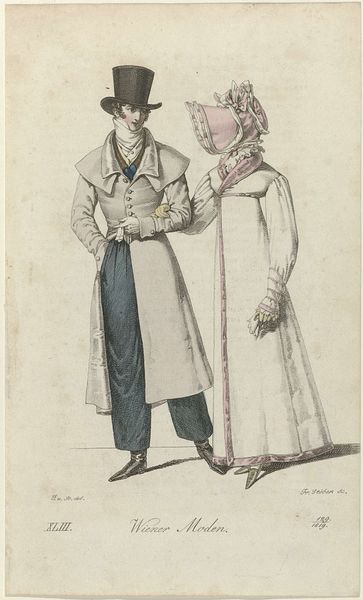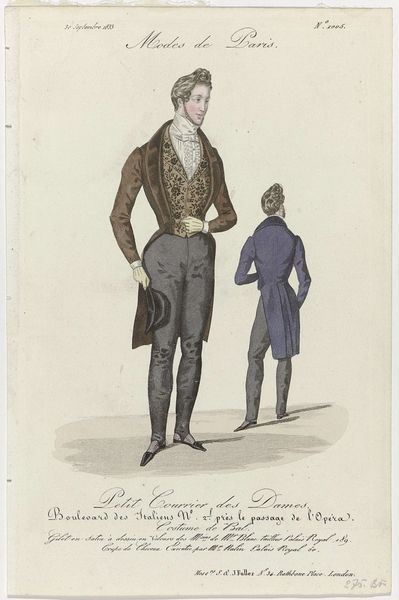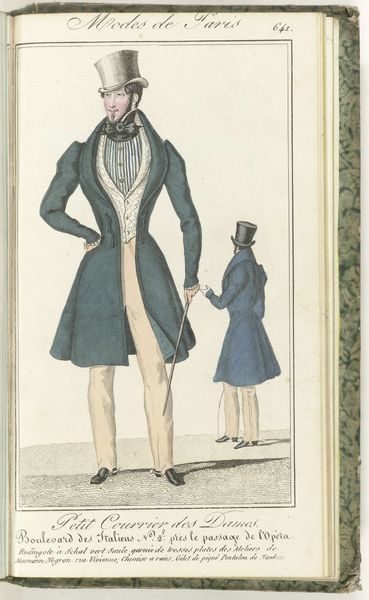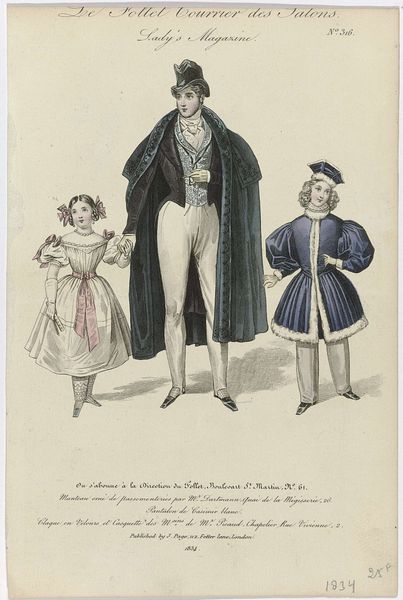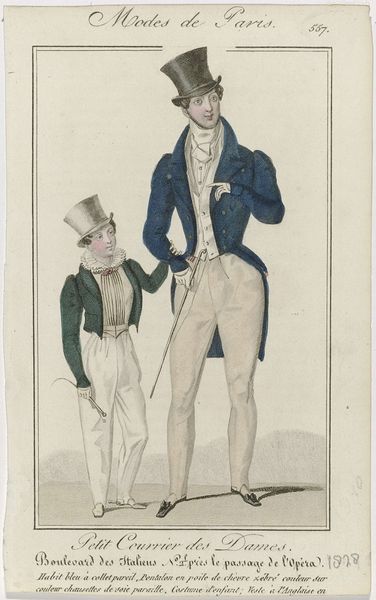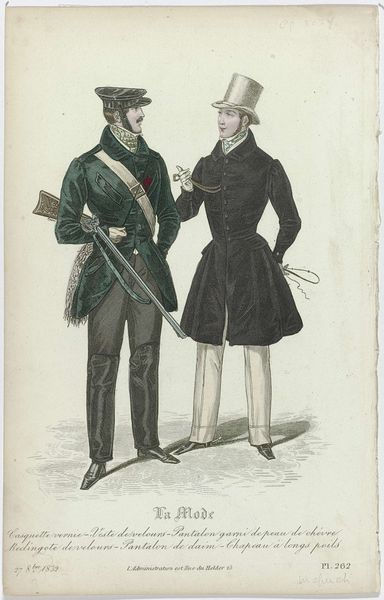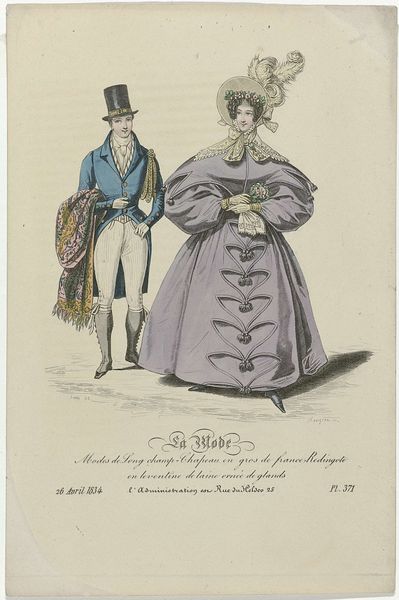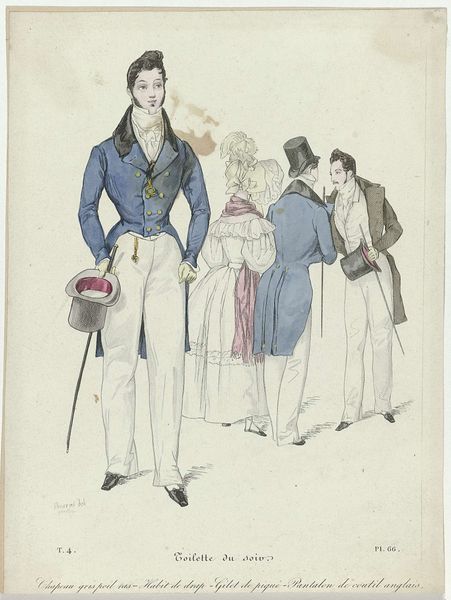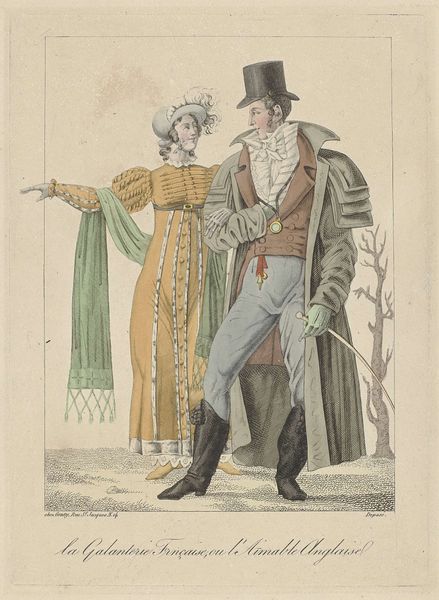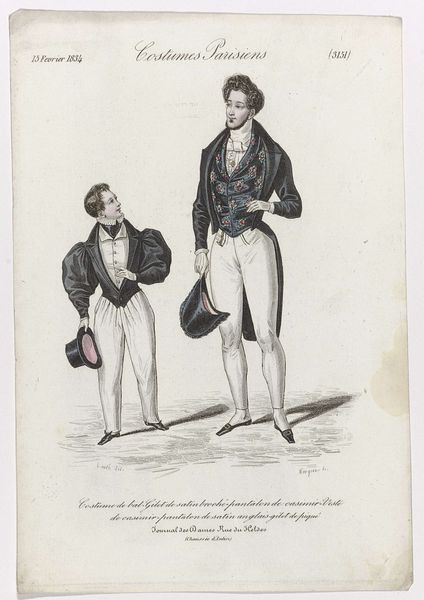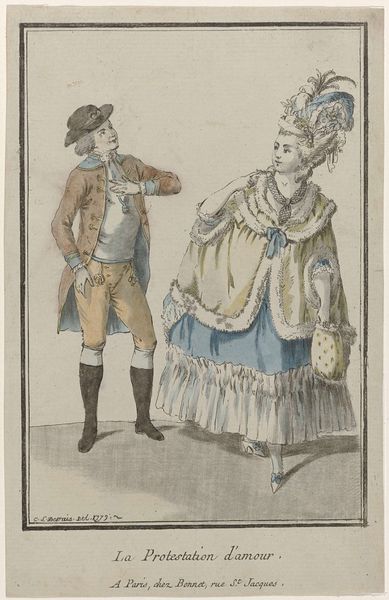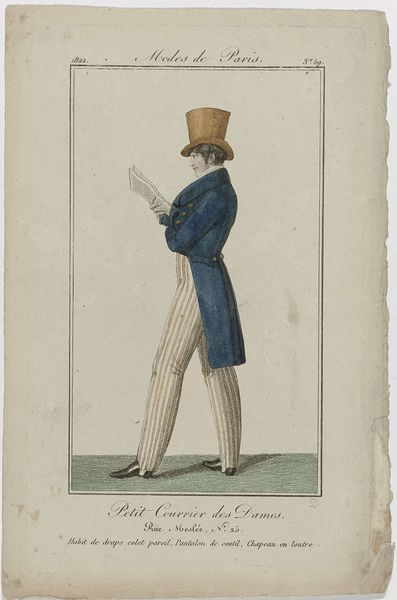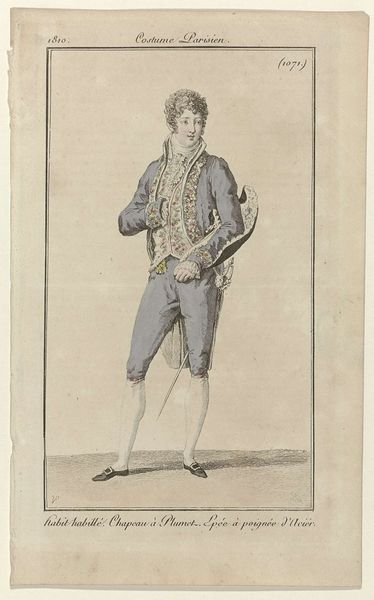
drawing, print, ink
#
portrait
#
drawing
# print
#
ink
#
genre-painting
Dimensions: height 198 mm, width 126 mm
Copyright: Rijks Museum: Open Domain
Editor: This print is titled "Petit Courrier des Dames, 1835, No. 1130" and it’s a drawing made with ink. It showcases two figures in distinct attire, seemingly depicting fashion from that era. There's a certain theatrical quality to the first figure, almost like a costume design. How do you interpret this work within its historical context? Curator: I see this image as a potent representation of constructed identities in 19th-century France, specifically highlighting the fluidity of gender and performance through clothing. It comes from a period obsessed with categorizing people through visual means. The figure on the left, in the Pierrot-esque costume, challenges traditional notions of masculinity. Why do you think the artist chose to depict this androgynous figure alongside the more conventionally dressed man? Editor: Perhaps to contrast the norms with the exceptions, and make a statement about personal expression, what do you mean when you talk about the fluidity of gender and performance through clothing? Curator: Clothing, particularly in the 19th century, functioned as a powerful signifier of social status, gender identity, and political allegiance. But what happens when those signifiers are deliberately disrupted or reconfigured? Think about the subversive potential of a figure adopting clothing traditionally associated with another gender or social class. It raises questions about authenticity, performativity, and the limitations of prescribed roles. The print isn't just a record of fashion; it's an intervention, asking us to look closer at the artificiality of social categories. It invites a dialogue with contemporary debates about gender fluidity and identity. Editor: I hadn't considered the subversive potential so directly. So this image goes beyond simply documenting fashion, it becomes a commentary on societal expectations. Curator: Exactly. We should also not think that fashion magazines only affected women’s identities but shaped how men perceived their masculinity and were asked to adopt or deny. These type of fashion plates asked its male audience to become active participants in fashion consumption, to think through class aspirations and societal expectations around ideal masculinities. Editor: That’s fascinating; it gives me a lot to think about in terms of how clothing continues to shape identity today. Curator: Indeed, it reflects the power of visual media in shaping our understanding of self and society then and now.
Comments
No comments
Be the first to comment and join the conversation on the ultimate creative platform.
